2016 Toyota Camry: Car Seat Check

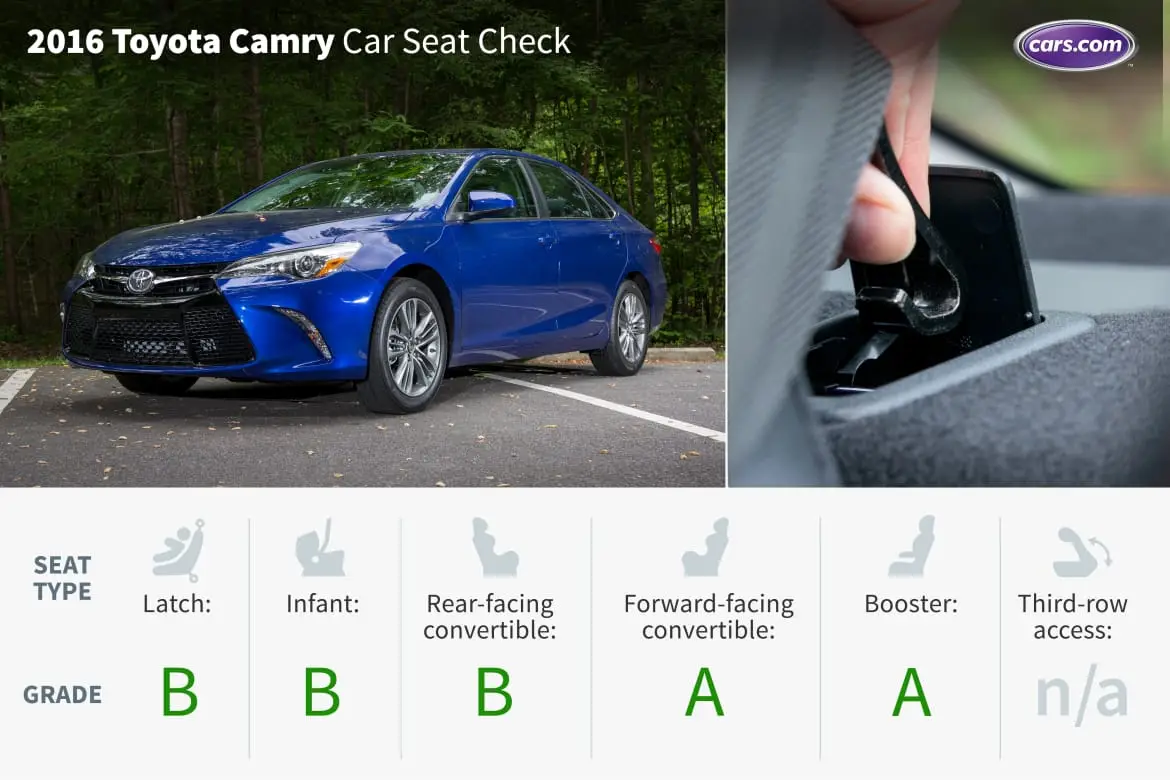
CARS.COM — The perennially best-selling Toyota Camry returns for the 2016 model year virtually unchanged from the previous year’s redesign. So if you got hooked on the five-passenger midsize sedan’s bass-mouthed maw in 2015, it’s likely you’ll be reeled in once again. In our Car Seat Check, buried Latch anchors complicated access when installing our convertible seat, which also was the case in the model-year 2015 Camry’s Car Seat Check.
How many car seats fit in the second row? Two
What We Like
- Our infant safety seat’s thin, hooklike connectors worked better with the Latch anchors than the convertible’s chunky connectors.
- There are three top tether anchors on the rear shelf and it was easy to connect our forward-facing convertible’s tether strap.
- Our 5-foot-6 tester had enough legroom with the convertible seat in the rear-facing position.
- The stable seat belt buckle stalks will make it easier for kids to buckle up independently.
What We Don’t Like
- We had to move the front-passenger seat forward to make room for the infant seat; tester’s knees were nearly grazing the glove compartment.
- The aforementioned Latch-anchor issue made installing our convertible, with its thicker connectors, a bit of a challenge. The sedan’s buried Latch anchors complicated access.
- The fixed head restraint pushed the booster’s seatback slightly off the seat.
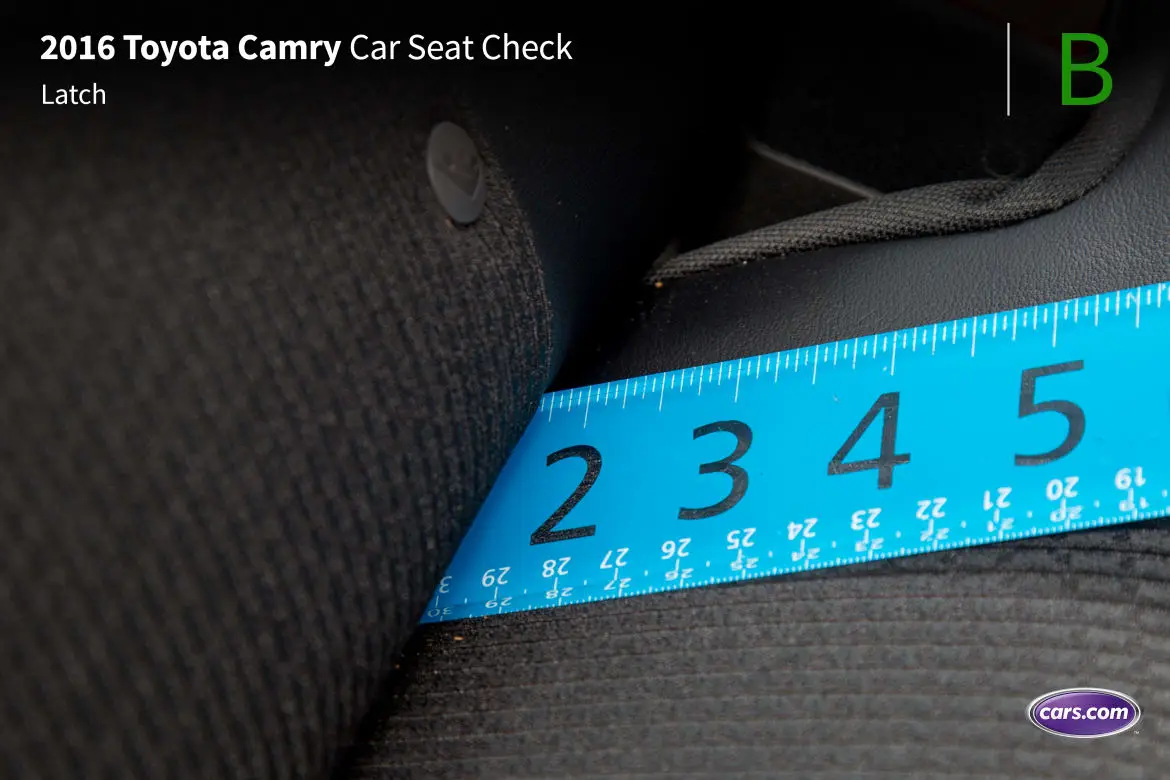
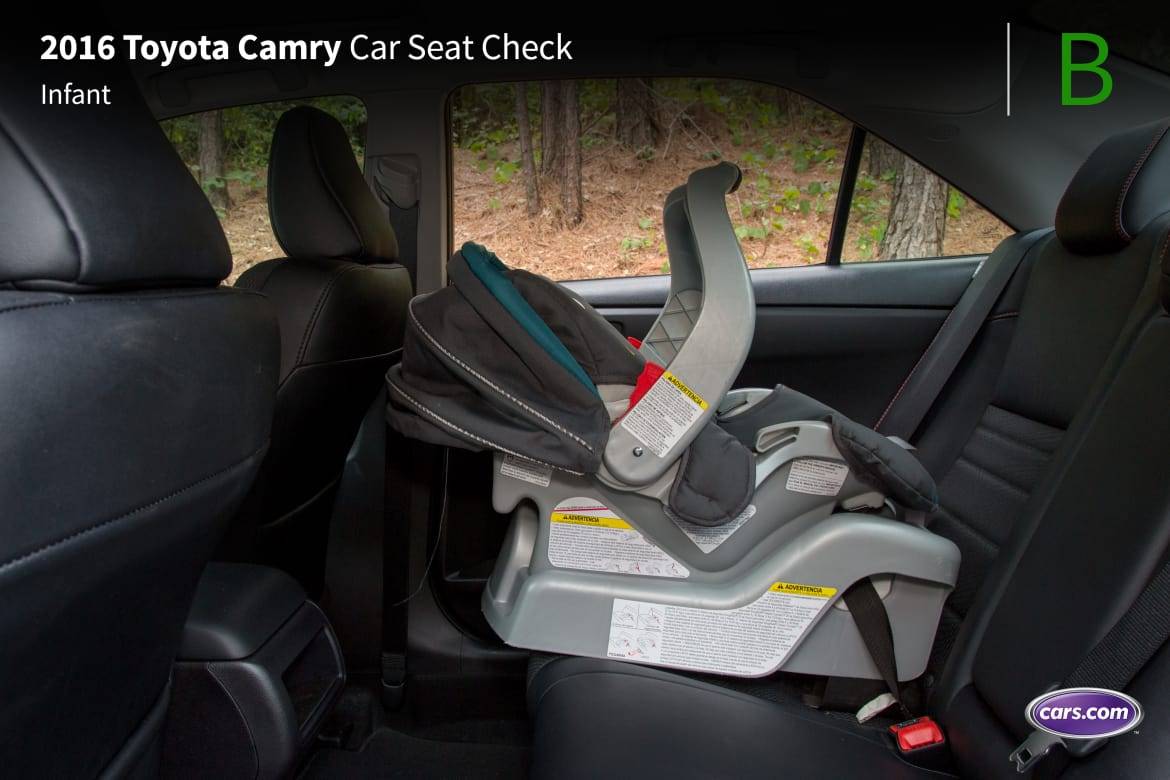
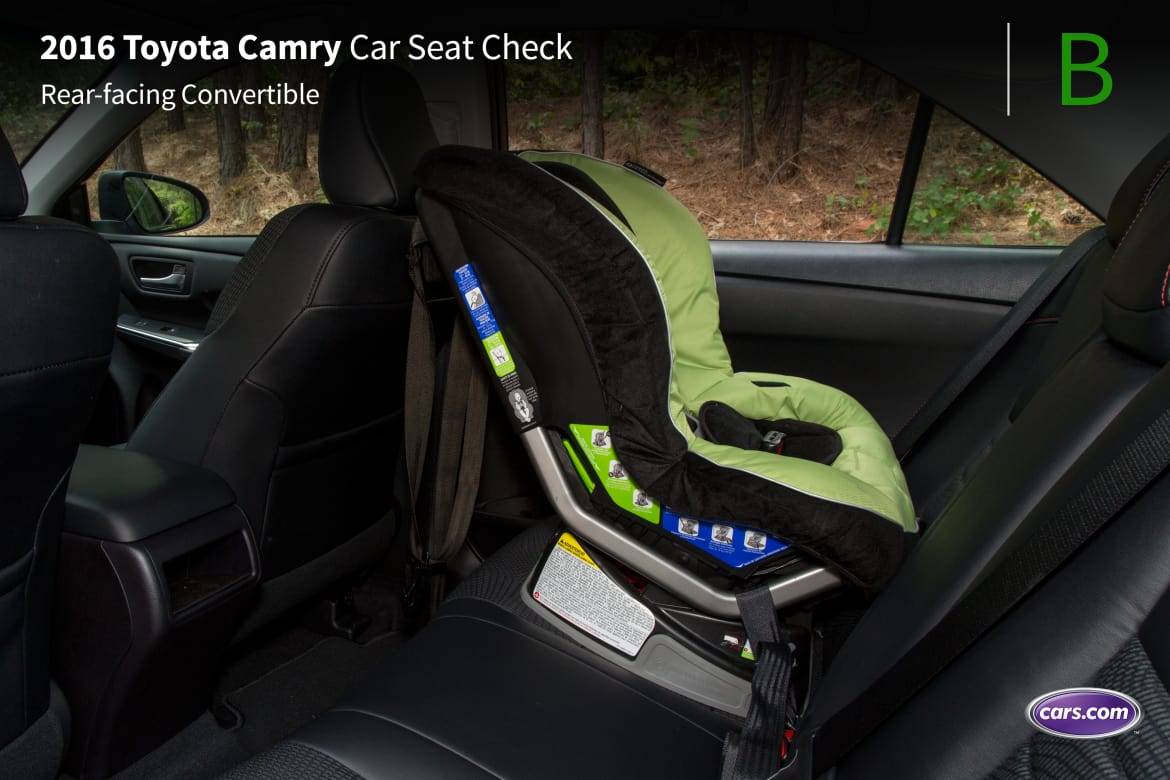
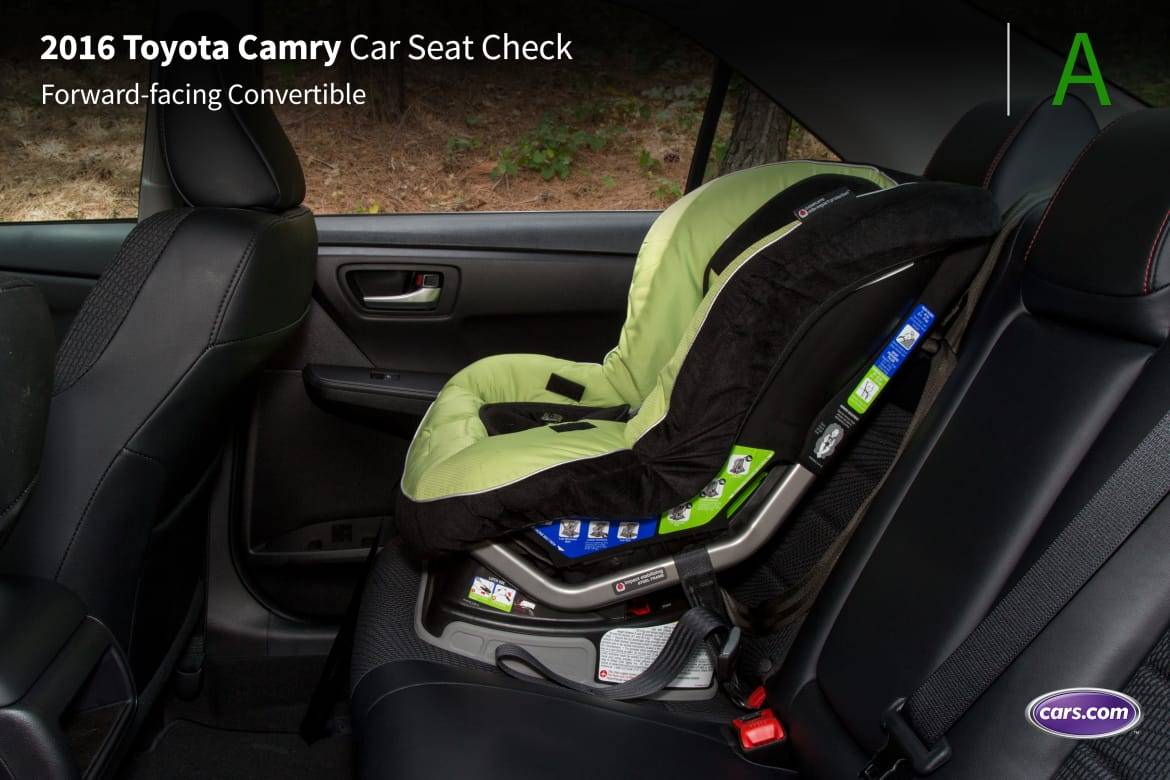
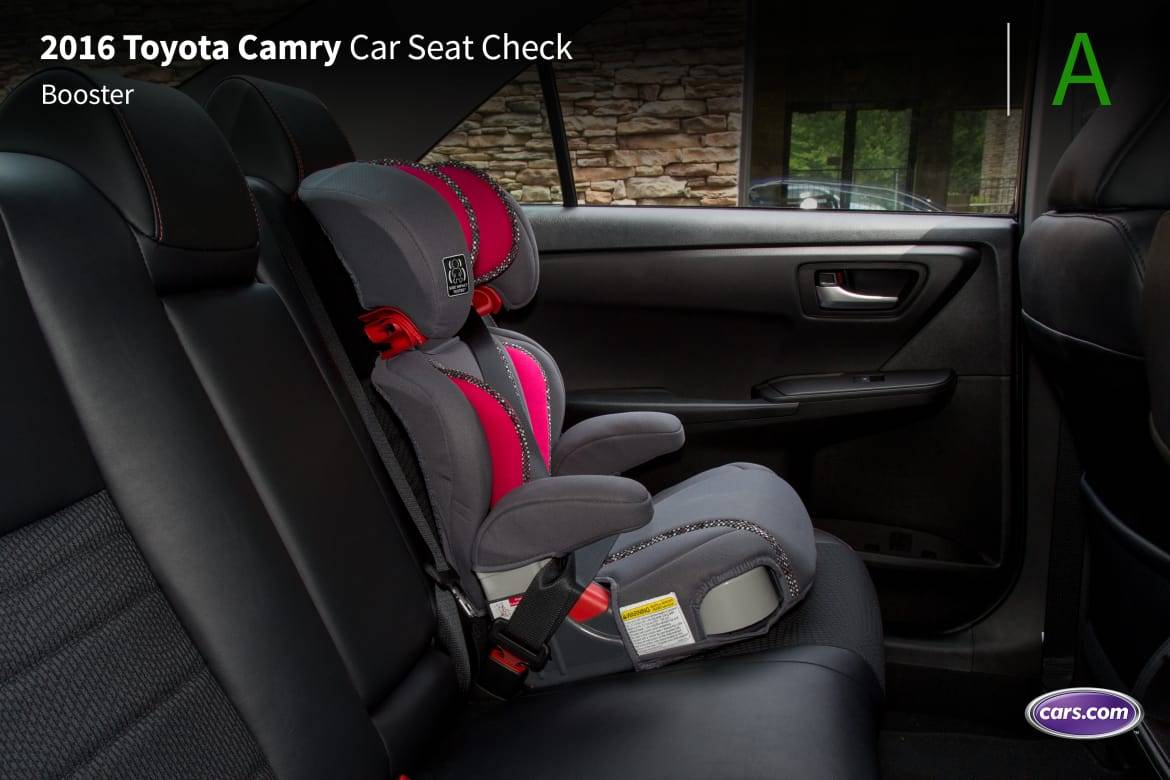





Grading Scale
A: Plenty of room for the car seat and the child; doesn’t impact driver or front-passenger legroom. Easy to find and connect to Latch and tether anchors. No fit issues involving head restraint or seat contouring. Easy access to the third row.
B: Plenty of room. One fit or connection issue. Some problems accessing third row when available.
C: Marginal room. Two fit or connection issues. Difficult to access third row when available.
D: Insufficient room. Two or more fit or connection issues.
F: Does not fit or is unsafe.
About Cars.com’s Car Seat Checks
Editors Jennifer Geiger, Jennifer Newman and Matt Schmitz are certified child safety seat installation technicians.
For the Car Seat Check, we use a Graco SnugRide Classic Connect 30 infant-safety seat, a Britax Marathon convertible seat and Graco TurboBooster seat. The front seats are adjusted for a 6-foot driver and a shorter passenger. The three child seats are installed in the second row. The booster seat sits behind the driver’s seat, and the infant and convertible seats are installed behind the front passenger seat.
We also install the forward-facing convertible in the second row’s middle seat with the booster and infant seat in the outboard seats to see if three car seats will fit; a child sitting in the booster seat must be able to reach the seat belt buckle. If there’s a third row, we install the booster seat and a forward-facing convertible. To learn more about how we conduct our Car Seat Checks, go here.
Parents should also remember that they can use the Latch system or a seat belt to install a car seat, and that Latch anchors have a weight limit of 65 pounds, including the weight of the child and the weight of the seat itself.

Former Assistant Managing Editor-News Matt Schmitz is a veteran Chicago journalist indulging his curiosity for all things auto while helping to inform car shoppers.
Featured stories
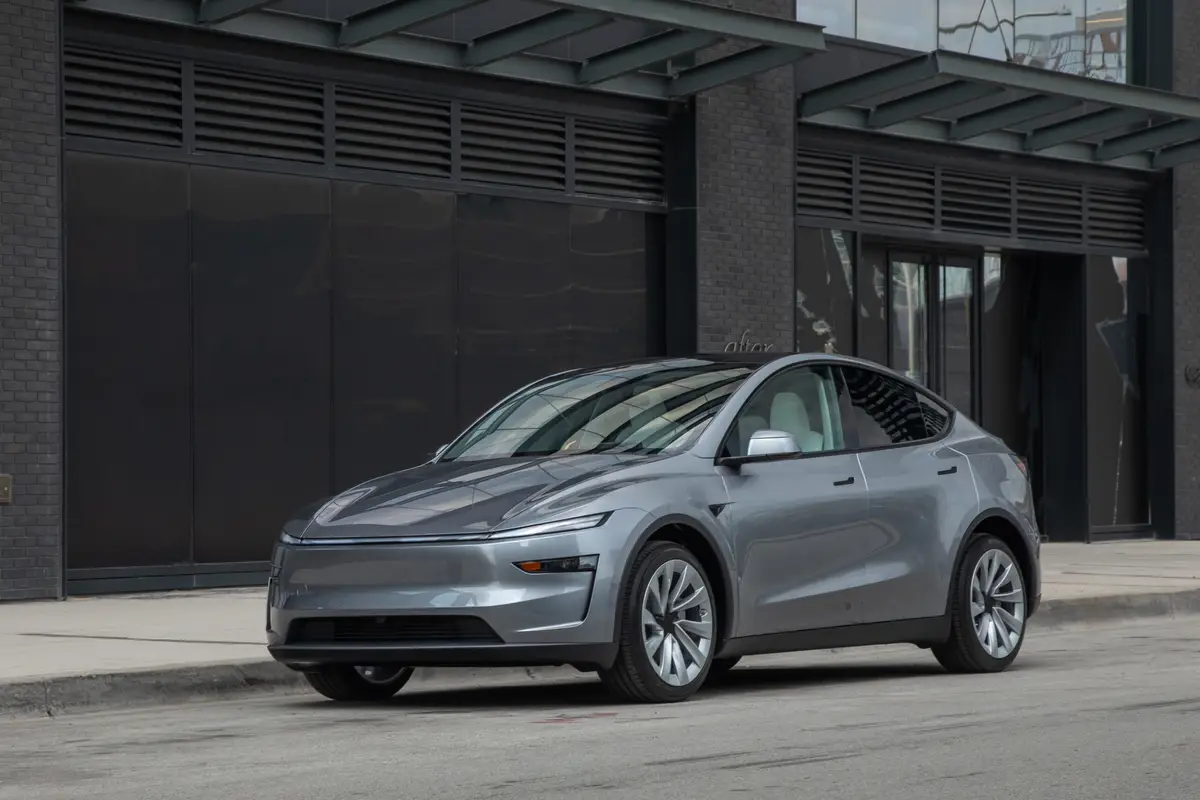
Should Tesla Model Y Owners Get the New 2026?

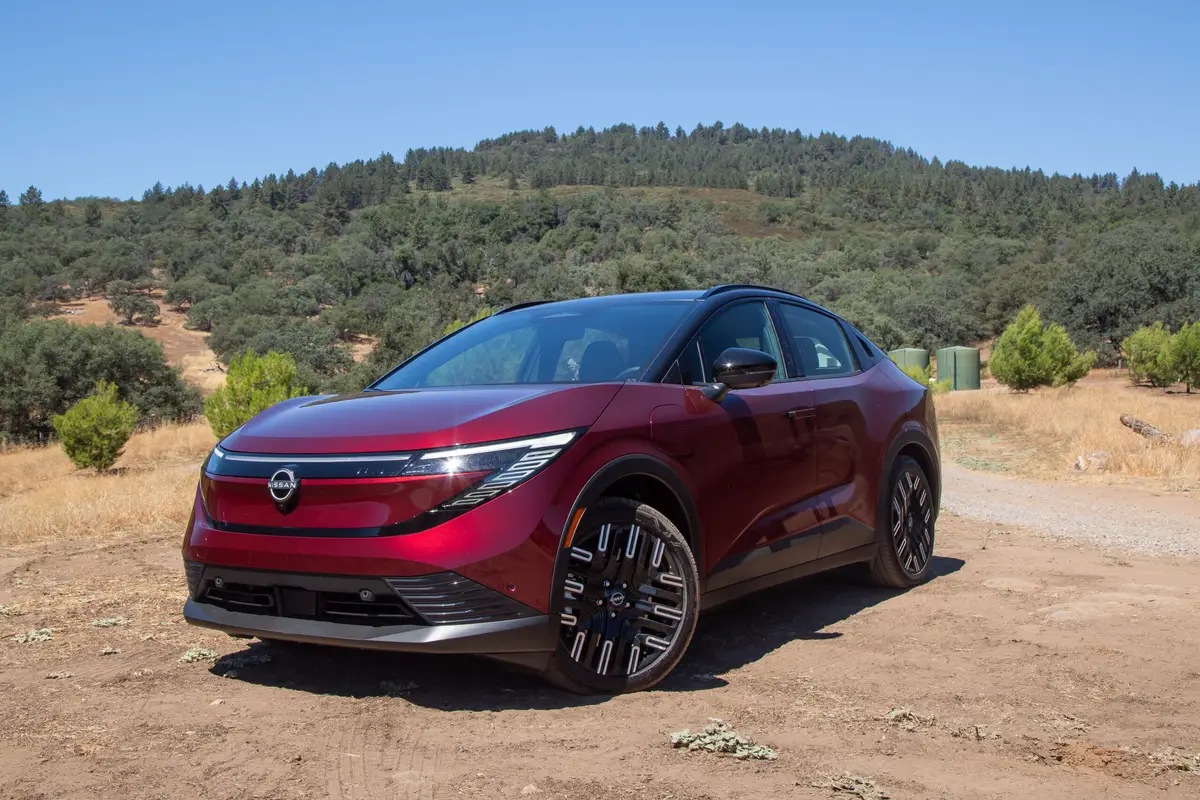
2026 Nissan Leaf Review: Value Victory







